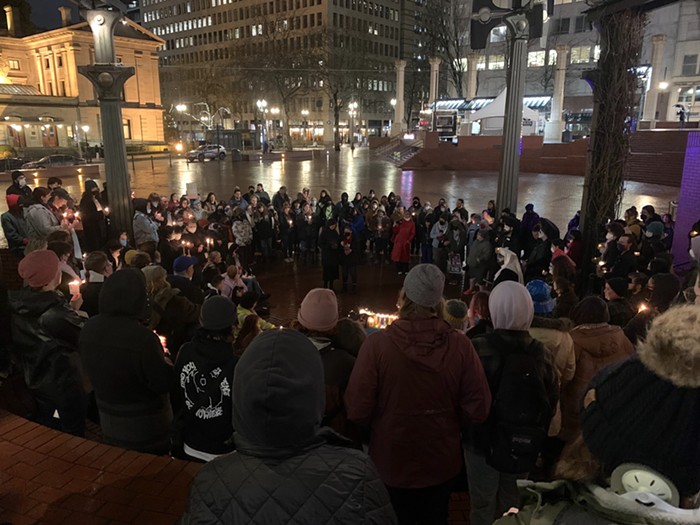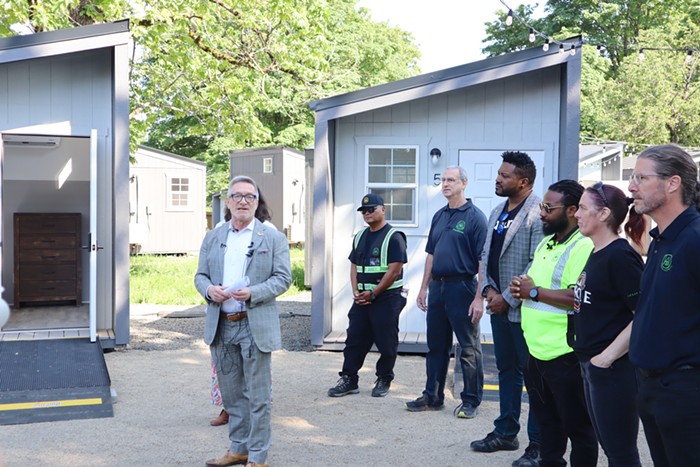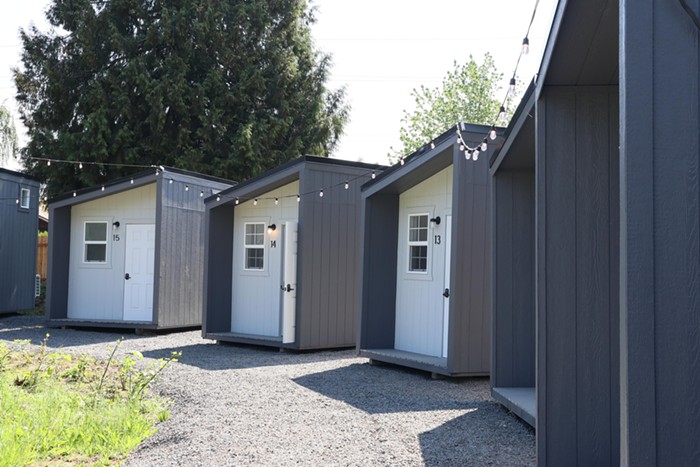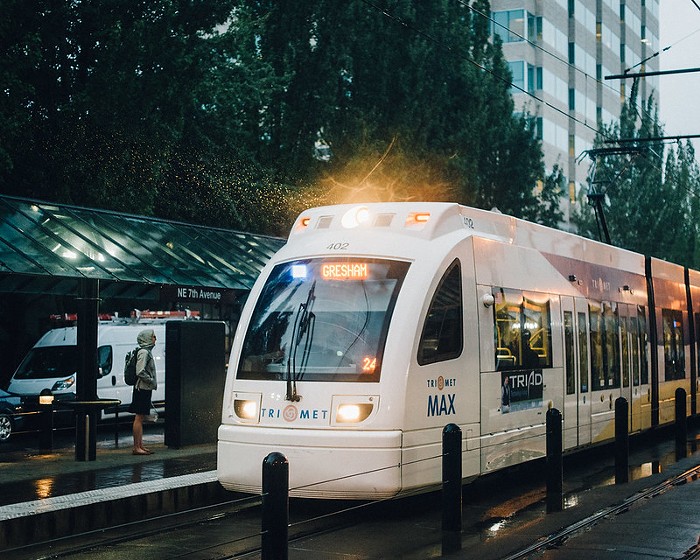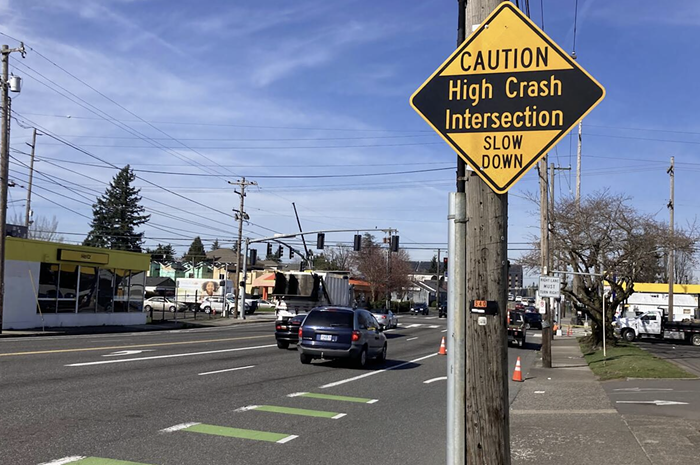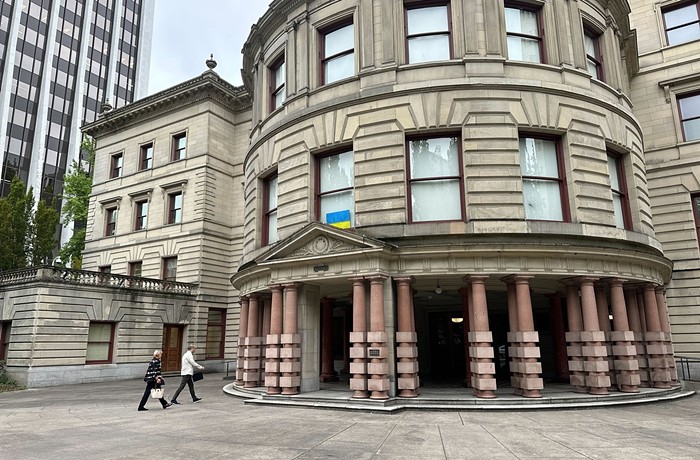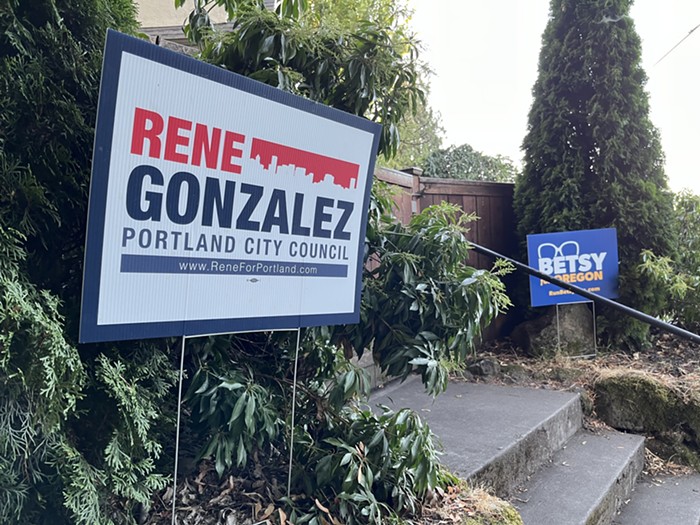A futuristic structure may soon be coming to the Portland State University (PSU) campus—complete with loudspeakers, solar panels, bike pedals, and electrical outlets. But this alien-looking creation isn’t a toy for millennials—it’s designed to help save lives after a disaster. And its introduction at PSU may inspire more of them to pop up across the city.
The “PrepHub” looks like several park benches outfitted with bike pedals and arranged underneath a tall, glowing pillar with speakers and screens on its sides. Fueled by solar and pedal power, PrepHub is the brainchild of the Urban Risk Lab at the Massachusetts Institute of Technology (MIT); its purpose is to generate electricity, disperse important information following a disaster, and create a location for people to gather. It will also provide storage for emergency supplies like first aid kits and radios for communication.
The idea to outfit PSU with a PrepHub has been floating around City Hall for a year, but planning won’t kick off until Portland City Council votes to sign off on $90,000 of funding for the pilot project on Wednesday, August 8. Portland General Electric (PGE) and PSU will also contribute funds to cover the project’s $300,000 price tag. If approved, the first PrepHub will be installed sometime in 2019. Where exactly it will land on the PSU campus is still up in the air.
Portland is putting its own twist on PrepHub, including materials that should help the structure survive all types of weather.
“We’re thinking about using powder-coated sheet metal as one of the primary materials for this one, similar to the Portland Loo,” says David Moses, the PrepHub project manager at MIT.
The program could also integrate into one of Portland’s existing emergency management programs—the Basic Earthquake Emergency Communication Node (BEECN). BEECN is a network of sites that are prepared ahead of time to be run as communication hubs by volunteers, post-disaster. There’s already a BEECN site on the PSU campus—one of about 50 across the city, says Ernest Jones, Portland’s BEECN coordinator. Placed in public parks and other open locations where a neighborhood’s residents can easily gather, BEECN sites pop up 24 to 48 hours after a disaster to provide first aid kits, communications, and a planned gathering place.
But the city admits that BEECN sites are unknown to the average Portlander, despite the map being available online. Setting up PrepHubs at BEECN sites could help publicize these locations—and because PrepHubs are tall and light up at night, they should be easy to spot from a distance.
“These would be independent sources of emergency power for a community. It can be recharged during an emergency through pedal power and the use of the solar array.”—Jay Jewess, director of emergency management for Portland General Electric
PSU’s PrepHub will also provide opportunities for research in electrical engineering and sociology. PrepHubs include batteries that can pull power from the electric grid for use after a disaster hits. PGE and PSU researchers will be able to study the use of such batteries during peak usage periods or power outages.
“These would be independent sources of emergency power for a community,” says Jay Jewess, PGE’s director of emergency management. “It can be recharged during an emergency through pedal power and the use of the solar array.”
That power storage device is also an opportunity for PGE to experiment with creating a modern electric grid that can better withstand disaster, Jewess adds.
The sociological research would focus more on how such a visible structure focused on disaster preparedness can help neighbors plan for emergencies. “One of the intents is to try to raise earthquake awareness and therefore resilience,” says Kristin Tufte, the smart cities liaison at PSU. Researchers will try to determine whether the PrepHub has achieved that awareness, and if it has helped people become personally prepared for disaster.
While there aren’t current plans to put PrepHubs at every BEECN site, “the end goal would be to expand this if the pilot is a success,” says Portland Bureau of Emergency Management spokesperson Dan Douthit. The pilot program could be expanded to one or two other sites, likely in areas further from downtown, like outer East Portland. PrepHubs at the other pilot sites may integrate free public wifi.
“Long term, if it’s successful,” says Douthit, “we’d like to see these [as] permanent structures throughout the city.”
